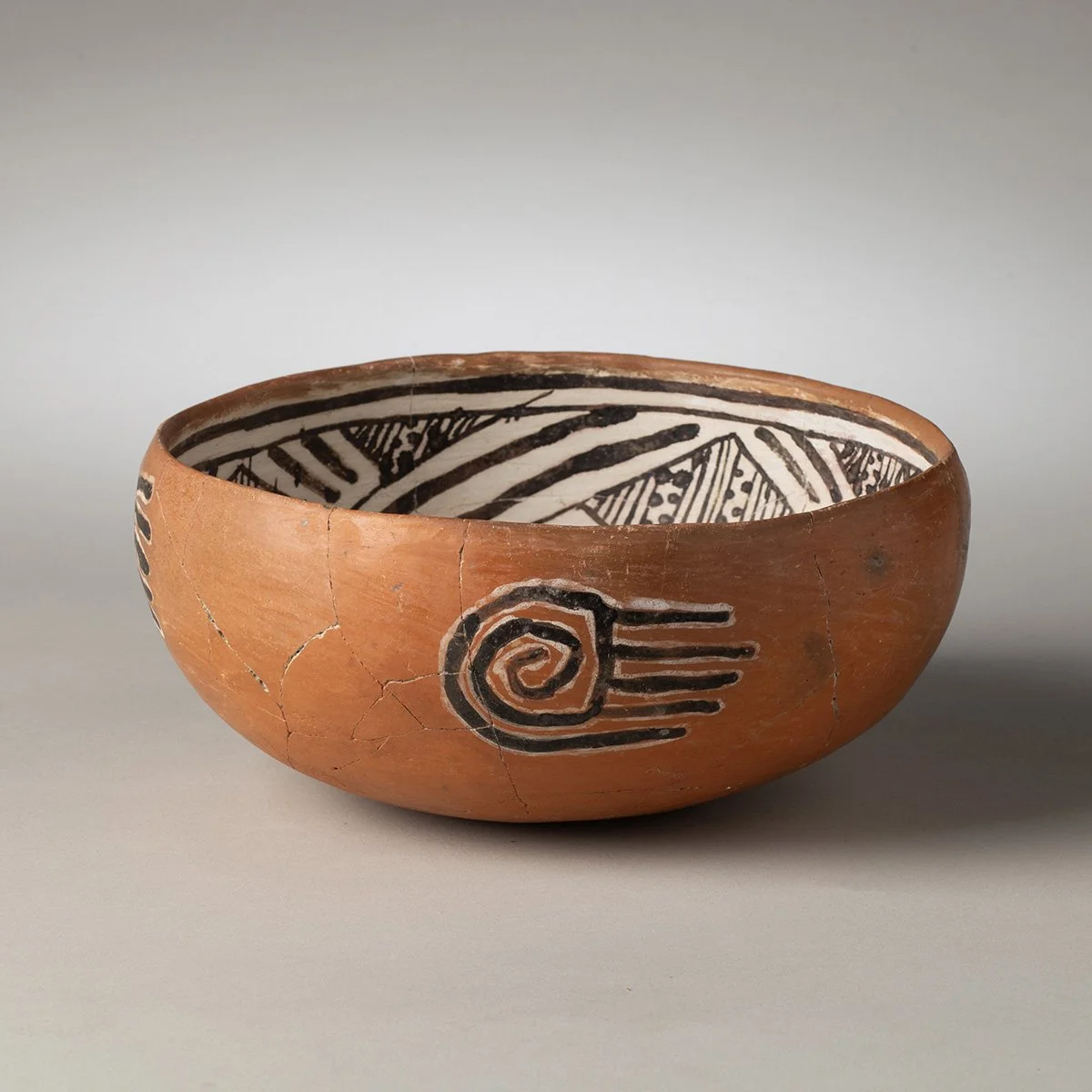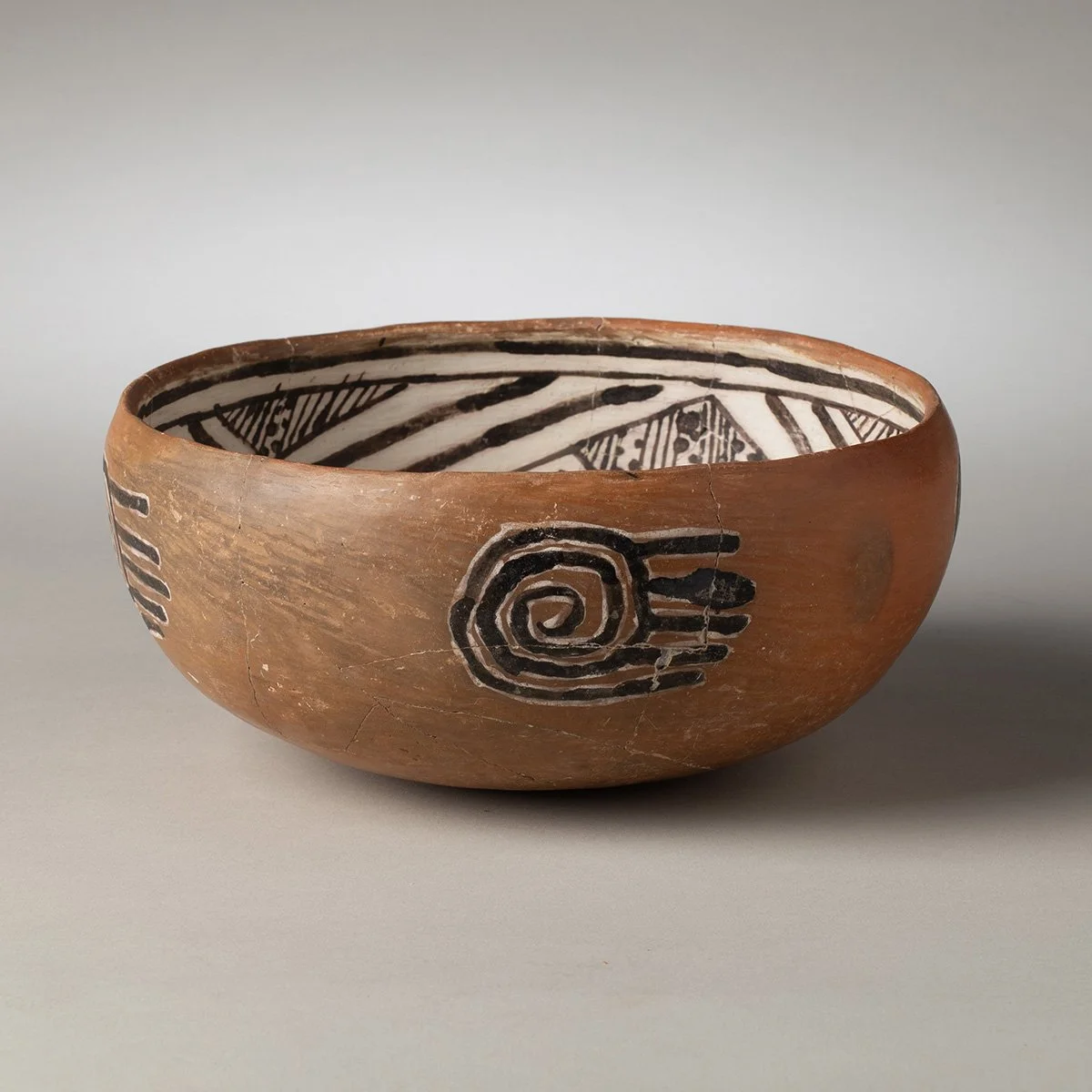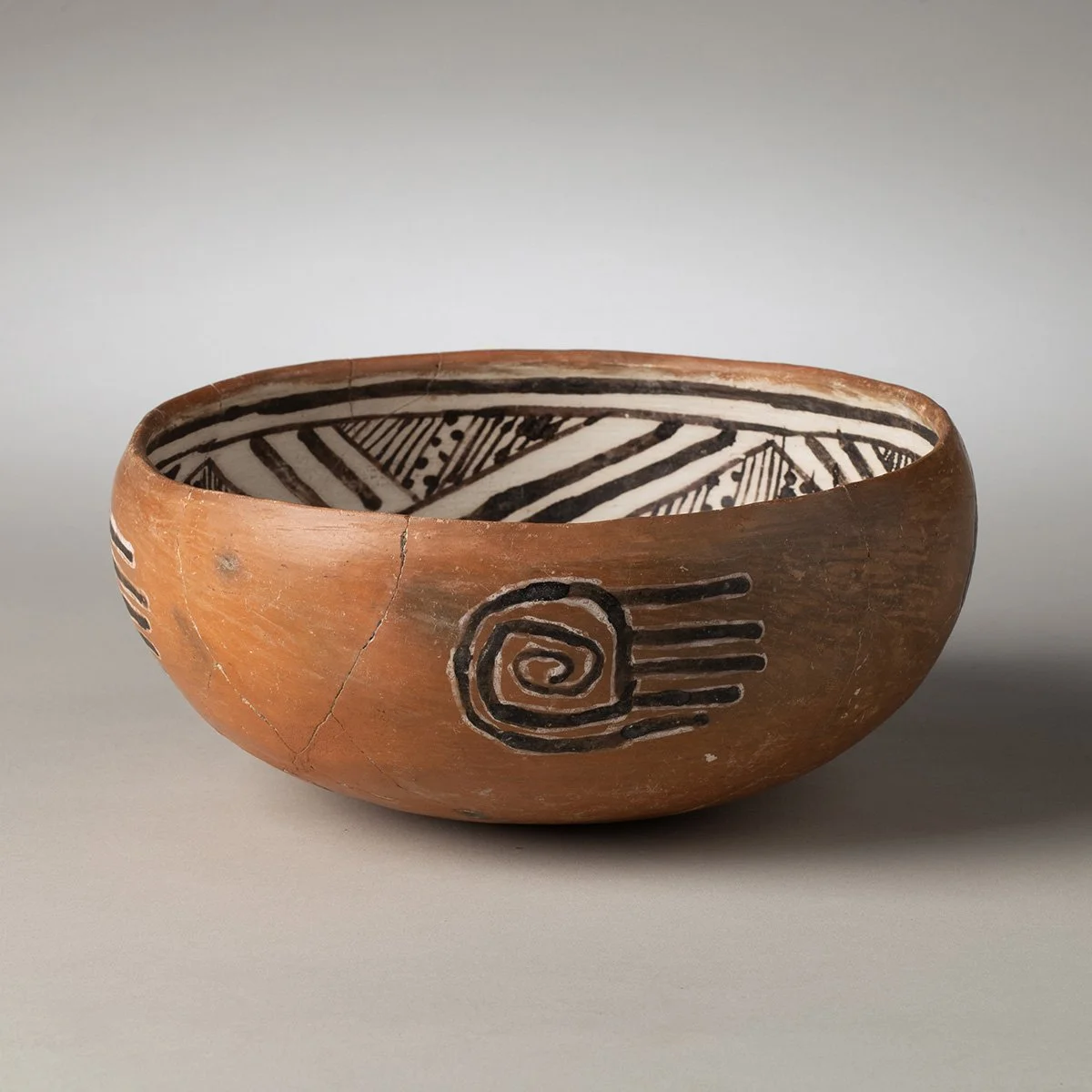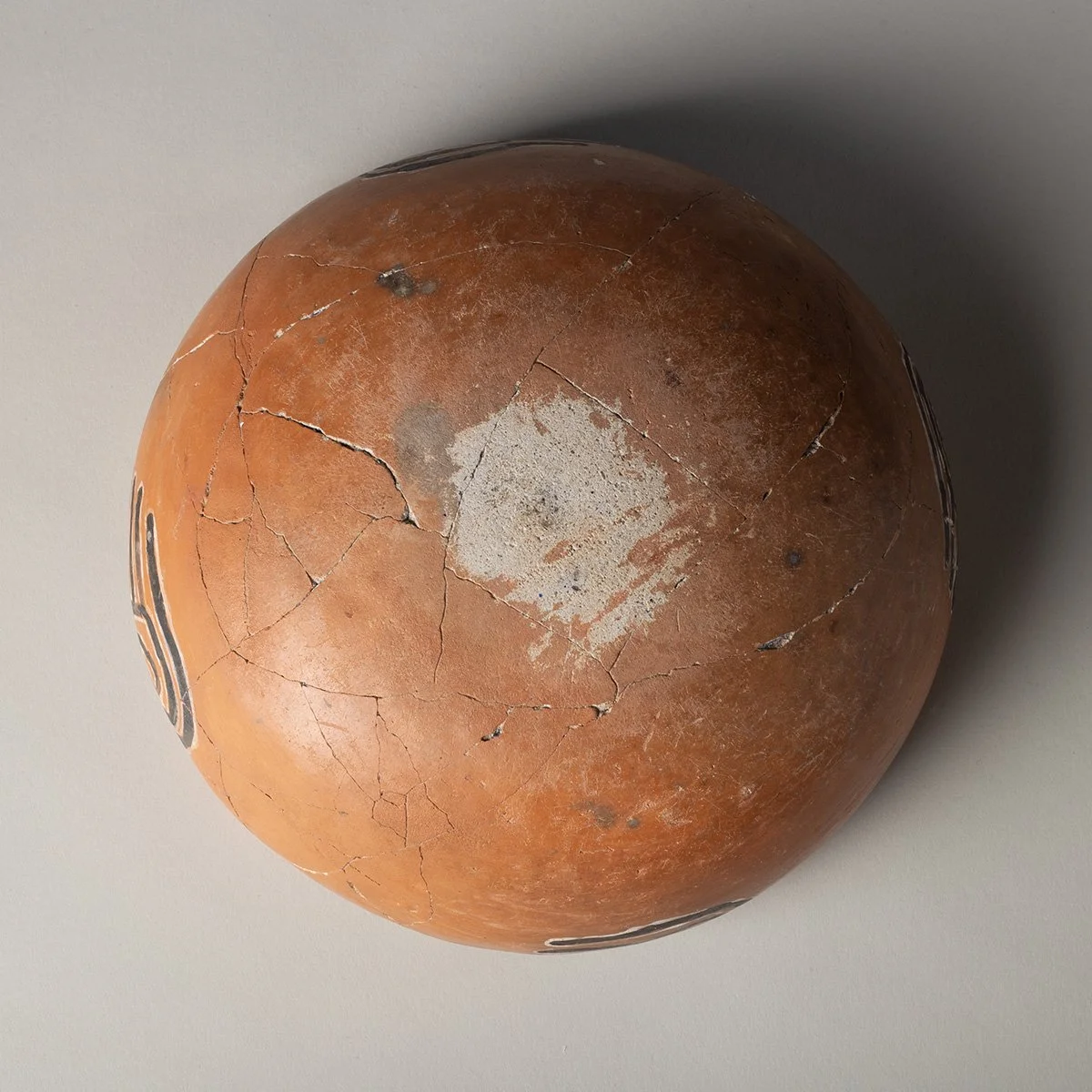 Image 1 of 5
Image 1 of 5

 Image 2 of 5
Image 2 of 5

 Image 3 of 5
Image 3 of 5

 Image 4 of 5
Image 4 of 5

 Image 5 of 5
Image 5 of 5






Rare Kwakina Polychrome Bowl
New Mexico
1325 - 1400 AD
Height 4" Diameter 8 3/4"
Provenance: Tony Berlant, Santa Monica, CA
Kwakina Polychrome was described by Reed (1955). This type marks the introduction of white slips on glaze wares produced in the Zuni region and exhibits characteristics similar to those described for Showlow Polychrome and other late White Mountain Red Ware types (Dittert and Plog 1980; Huntley 2008; Lammon and Harlow 2008; Woodbury and Woodbury 1966). This type appears to have been produced from about A.D. 1325 to 1400.
Pottery assigned to this type is tempered with crushed sherd sometimes with sand or angular rock fragments and pastes are light gray to paste. Bowl interiors exhibit a white to buff slip while exteriors have an orange to red slip. Jars often exhibit a painted white band between red portions of the upper and lower vessel. Designs are applied in well-controlled black to green glaze that is fairly thick. Designs in glaze paint were applied over the white to cream slip in bowl interiors and were organized into banded areas divided into panels, often dominated by large interlocking triangular motifs. Other common designs include parallel lines, stepped lines, checkerboards pendant triangles, interlocking keys, lines with pendant dots, and negative circles in solid black triangles (Dittert and Plog 1980; Woodbury and Woodbury 1966). Pottery forms known to have been produced in the Acoma region that display styles similar to and seem to be contemporaneous with Kwakina Polychrome is sometimes assigned to Alpha-One Polychrome (Lammon and Harlow 2013). This pottery is grouped here with Kwakina Polychrome although the range of color in the exterior slips may be slightly different (Dittert and Plog 1980).
Not Found on Federal or State Land.
New Mexico
1325 - 1400 AD
Height 4" Diameter 8 3/4"
Provenance: Tony Berlant, Santa Monica, CA
Kwakina Polychrome was described by Reed (1955). This type marks the introduction of white slips on glaze wares produced in the Zuni region and exhibits characteristics similar to those described for Showlow Polychrome and other late White Mountain Red Ware types (Dittert and Plog 1980; Huntley 2008; Lammon and Harlow 2008; Woodbury and Woodbury 1966). This type appears to have been produced from about A.D. 1325 to 1400.
Pottery assigned to this type is tempered with crushed sherd sometimes with sand or angular rock fragments and pastes are light gray to paste. Bowl interiors exhibit a white to buff slip while exteriors have an orange to red slip. Jars often exhibit a painted white band between red portions of the upper and lower vessel. Designs are applied in well-controlled black to green glaze that is fairly thick. Designs in glaze paint were applied over the white to cream slip in bowl interiors and were organized into banded areas divided into panels, often dominated by large interlocking triangular motifs. Other common designs include parallel lines, stepped lines, checkerboards pendant triangles, interlocking keys, lines with pendant dots, and negative circles in solid black triangles (Dittert and Plog 1980; Woodbury and Woodbury 1966). Pottery forms known to have been produced in the Acoma region that display styles similar to and seem to be contemporaneous with Kwakina Polychrome is sometimes assigned to Alpha-One Polychrome (Lammon and Harlow 2013). This pottery is grouped here with Kwakina Polychrome although the range of color in the exterior slips may be slightly different (Dittert and Plog 1980).
Not Found on Federal or State Land.

